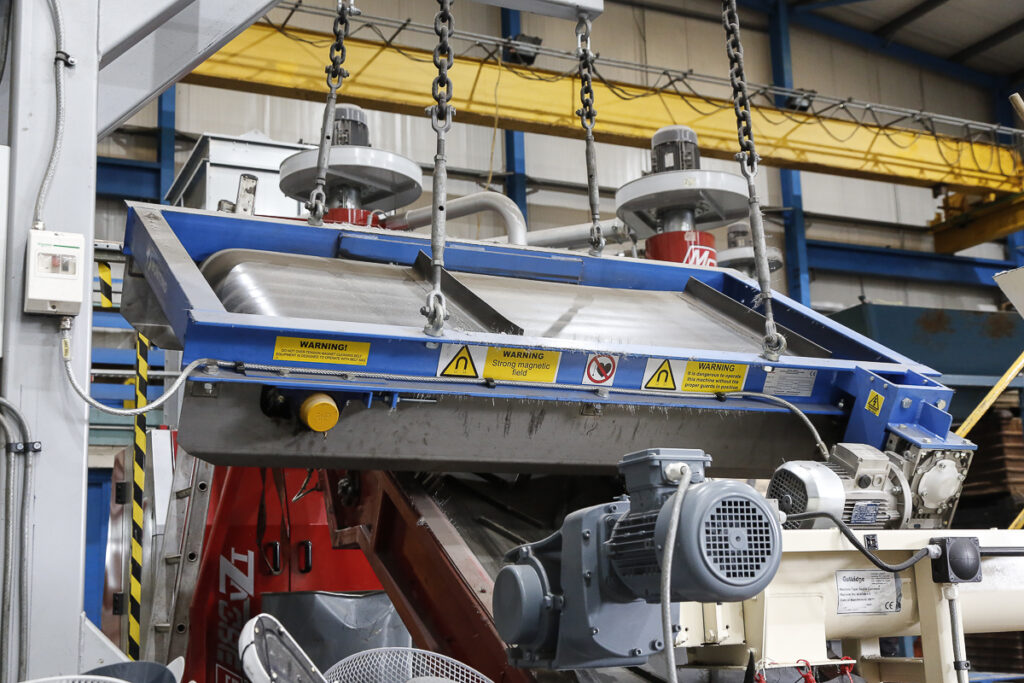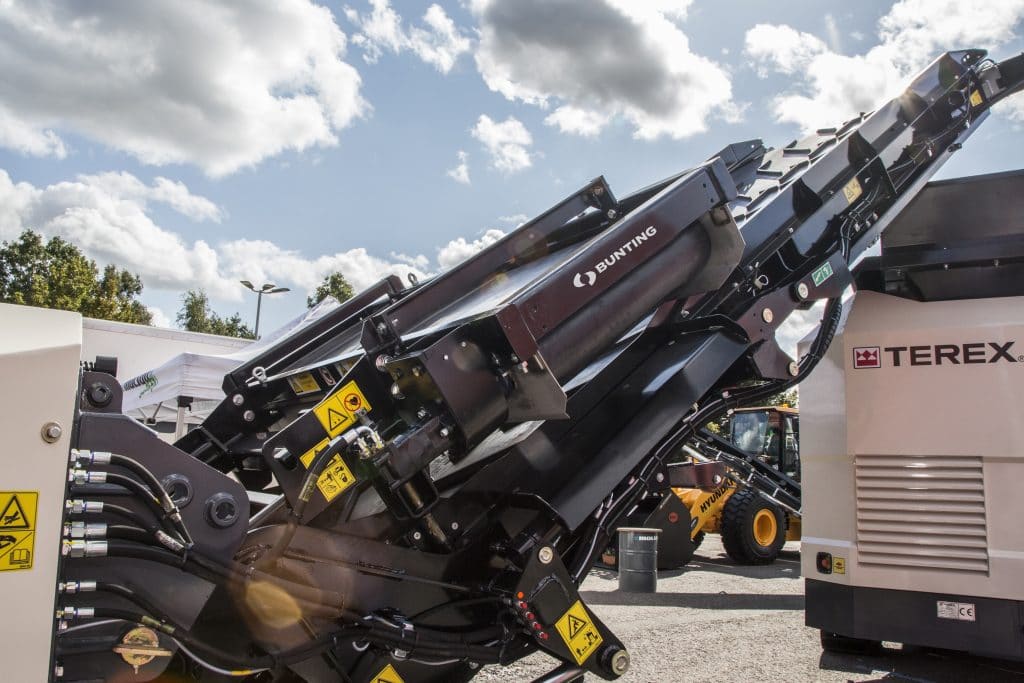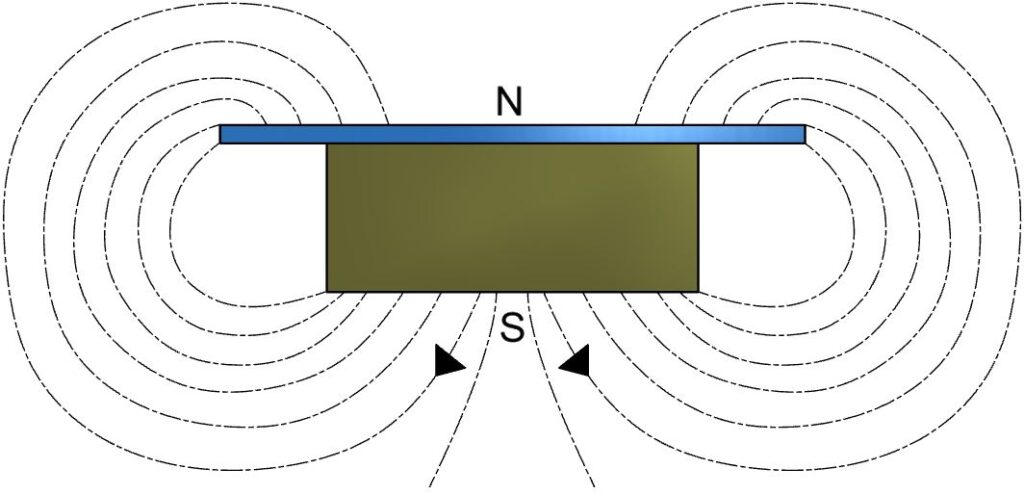Single, Twin and Tri Pole Overband Magnet Development
By Paul Fears | 16 September 2024
Bunting has developed three designs of Permanent Crossbelt Overband Magnet (PCB), with different magnetic polarity, to suit an ever-expanding range of applications. Overband Magnets are mounted over conveyors to separate ferrous metal from non-magnetic material and are commonly used in industries including mining, quarrying, recycling, and wood.

The magnetic field of a Permanent Crossbelt Overband Magnet (PCB) is generated by charging ferrite or rare earth magnet blocks mounted inside a stainless-steel box with a steel back bar. The steel bar back forces the magnetic field to propagate through and out of the bottom of the magnet box, which would be down towards a conveyor transporting bulk materials such as aggregate or waste. Although all three designs operate under this basic principle, that is where the similarities cease.

The magnetic field of the three designs of Permanent Crossbelt Overband Magnet (PCB)s is defined as being either a ‘Single Pole’, ‘Twin Pole’ or ‘Tri-Pole’.
Single Pole Permanent Overband Magnet
The Single Pole design (PCB Single Pole) is the simplest and most common design of Permanent Crossbelt Overband Magnet (PCB). Constructed with a single magnet block and steel back bar, the north pole sits on the back bar with the south pole at the bottom of the block. The field runs vertical, from north to south, projecting out from the south pole and into material being transported on a conveyor.

The Single Pole design removes general tramp metal from a range of products in various applications. This design offers a reliable, cost-effective solution for quarries, mobile recycling plant and recycling operations.
Twin Pole Permanent Overband Magnet
A Twin Pole configuration uses two separate magnet boxes, mounted side by side on a single steel back bar, each with a different magnetic pole. The magnetic field flows from south to north (from one box to the other) producing a deep magnetic field that projects away and down from the magnet faces.
The enhanced separation performance of the PCB Twin Pole enables capture of smaller ferrous particles. The twin pole configuration has the advantage of lifting longer and thinner tramp ferrous metal, typically steel rebar, in a flat orientation which aids discharge and reduces belt wear. This characteristic of the Twin Pole occurs due to the different poles of the two magnet boxes attracting opposite ends of the ferrous metal rod, forcing it to remain flat in the field. The Single Pole design attracts one end, resulting in one end striking the belt or face of the magnet box.
Tri-Pole Permanent Overband Magnet
The Tri-Pole Permanent Crossbelt Overband Magnet (PCB) (PCB Tri-Pole) has two additional steel side poles mounted either side, with a gap, of a single central magnet box. Each of the side poles has a magnetic north pole, with the centre of the box being south pole (i.e. three poles). This generates two magnetic fields running from the box to the steel sidepoles. The sidepoles reduce flux leakage and concentrate the magnetic field downwards toward the product.
The greater depth of magnetic field generated by the PCB Tri-Pole results in a higher suspension height of the Overband Magnet, which is ideal for deeper troughed conveyors and higher burdens of material. The Tri-Pole model captures smaller ferrous metals that are difficult to separate with a PCB Single Pole.
An added advantage is that the shape and direction of the magnetic field limits any magnetisation of the Overband Magnet frame, which is ideal when processing materials such as waste wood containing nails and screws.
Permanent Crossbelt Overband Magnet (PCB) Selection
Selecting the correct Permanent Crossbelt Overband Magnet (PCB) is dictated by the application. Bunting’s applications engineers assess the ferrous metal separation objective (i.e. the plant being protected or the metal being recovered); the nature of the ferrous metal (i.e. shape, size, etc.); and the conveyed material (i.e. size range, burden depth). These criteria assist the team in selecting the optimum PCB for any given application.
With decades of experience of designing and building both permanent and electro Overband Magnets, Bunting continues to provide innovative and many bespoke magnetic separation solutions.